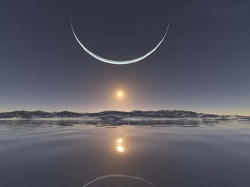Planets and Moons
Facts On the Moon
The moon is very cool and pretty! The moon has no atmosphere and it is dry it's dusty and it has a rocky surface. When two full moons occur in a single month, the second moon is called a ''Blue Moon''. Most of the moons surface is covered with Regolith, a mixture of fine dust and rocky debris which is produced by meteor impacts.The moon is called Luna by the Romans, Selene and Artemis by the Greeks. Moon rocks seem to be between 4.6 and 3 billion years old.The symbol for the moon is a cresent which is really cool! Every night there is a different moon shape and they are called first quarter, waxing gibbous, full moon, waining gibbous, last quarter, waining cresent, new moon, and waxing cresent.Our moon has so many features and it has so many names to lots of people.
The moon is bombarded by water-laden comets and meteoroids most of this water is trapped into space but some is trapped in permanantly shaded areas near the north and south poles.There are no mountains on the moon like there are in the Himmilayas, its only rocky rubble.
Our moon is fairly large.
Our moon is about one quarter the size of Earth amd it has about one-sixth of the Earth's gravity. The moon's orbit is 384,400 km from Earth. The moon's diameter is 3,476 km and it's mass is 7.35e22 kg. The moon's temperature ranges between 123 degrees celcius (253 degrees farenhight) to 233 degrees celcius (-451 degrees ferinhight). The word month is derived from the word ''moonth'' which was used to describe the period of time from new moon to new moon.
The moon is our only natural satellite.The moon is about the same age as the Earth. The time it takes to spin once around on it's own axis-takes the same amount of time to complete one orbit of the Earth, about 27.3 days. The rocks and soil brought back by Apollo missions are extremely dry and the moon has no indigeous water. When a Lunar Eclipse occures, the whole moon dissapears as it passes through the Earth's umbral shadow. A harvest moon officially turns full when it reaches the spot opposite to the sun, It happenes on the fall equinox which is September 23rd.


